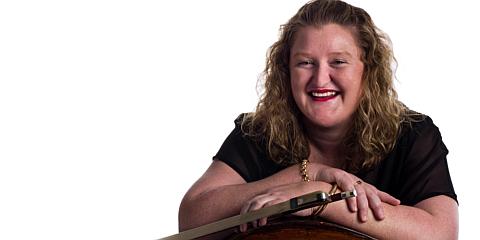MCO’s Mozart The King can be heard in Melbourne on Sunday 24 November and Thursday 28 November at Melbourne Recital Centre.
MCO: The Haydn symphony in this program is No. 98, and is one of his London symphonies. What was Haydn doing in London and does this context tell us anything about the music?
Emma: For much of his career, Haydn was employed by the Esterházy family and lived at their estate, relatively isolated from the rest of the musical community. After the death of Haydn’s patron Nikolaus Esterházy in 1790, impresario Johann Peter Salomon brought him to London as his composer-in-residence. Haydn composed his first six London symphonies in 1791–1792 during this first visit to London.
All of the London Symphonies are masterpieces and Symphony No 98 displays the invention and perfection of form audiences can expect from the “Father of the Symphony”. In the first movement, the trumpets and timpani lend the music an almost regal quality. The third movement is a total departure from this, full of rustic Viennese charm. Haydn provides a subtle reference to his location in the opening of the slow movement, with musical material strikingly reminiscent of “God Save the King”.
A significant influence on this work was the death of Haydn’s good friend Mozart —in fact, it was the first work Haydn composed after hearing the news. There are a number of aspects of the work that can be viewed as a tribute to Mozart. The opening Adagio of the symphony has a sombre, almost funereal, mood and the slow movement borrows material from Mozart’s Coronation Mass and Jupiter Symphony. One even wonders if the final movement is another nod to Mozart, as it is quite operatic in its twists and turns.
MCO: Natalia Harvey is performing one of Beethoven’s Romances with the orchestra. What is a Romance? Is it literally a piece with romantic connotations or something else?
Emma: The term Romance in music initially referred to a slow vocal work that was often romantic or sentimental. In the Classical period, composers started to imitate the vocal form in slow movements of symphonies and concertos and, as is the case with Beethoven, as stand alone works for solo instruments. Instrumental romances do not necessarily have romantic connotations but are usually vocal and expressive in character. Many scholars believe that Beethoven’s two Romances for Violin, composed at the turn of the 18th century, may have originally been intended as slow movements for concertos that never eventuated. They are both stunning works that showcase the expressive range of the violin beautifully. Natalia will be performing the F Major Romance. The opening of the work juxtaposes the simple beauty of the singing violin line against the richness of the full ensemble. As the work continues, the violin solo becomes more impassioned and virtuosic, foreshadowing Beethoven’s brilliant Violin Concerto in D Major, which was composed in 1806.
MCO: Mozart’s Piano Concerto No 22 — are there any special features that set this concerto apart from Mozart’s others, and what should the audience listen for in this piece?
Mozart’s Piano Concerto No. 22 in E flat major was one of three he composed while working on his celebrated opera The Marriage of Figaro in 1785–86. This was a period of remarkable productivity for Mozart. He was living in Vienna and composed piano concertos to showcase in his own solo recitals. This concerto was conceived in such a hurry that some passages in the manuscript were not fully written out and no cadenzas were included, suggesting that Mozart’s performances were often heavily improvised.
One of the special features of this concerto is that it was the first to include clarinets, which are believed to have been Mozart’s favourite wind instrument. The entire wind section is heavily featured throughout the concerto – the opening movement, in particular, is full of memorable wind melodies. For me, the second movement is the highlight of this work. The achingly beautiful yet simple theme obviously had an impact in the premiere performance of the concerto – the audience applauded so enthusiastically that Mozart played it again before moving onto the finale!

